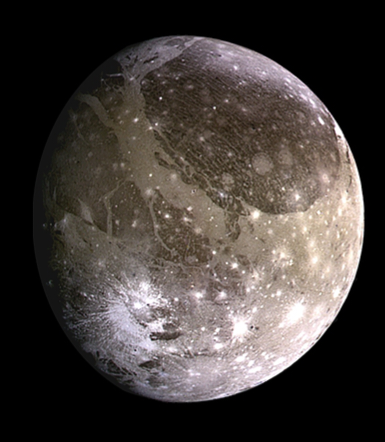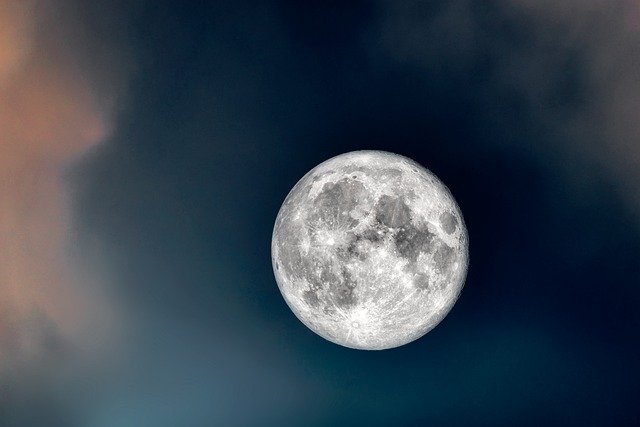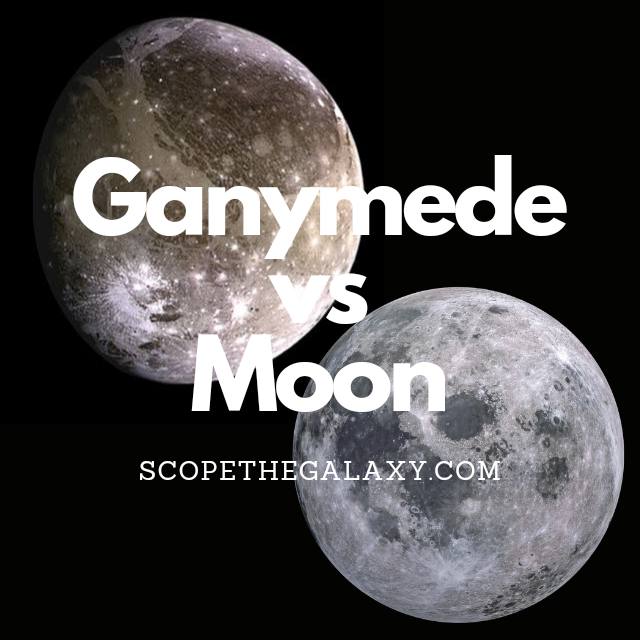*This post may contain affiliate links. This means we may make a commission if you purchase an item using one of our links*
The main differences between the Moon and Ganymede would be that the Moon orbits Earth whilst Ganymede orbits Jupiter, Ganymede is the biggest Moon in our solar system with a diameter of 5,269km whilst the Moon is 5th with a diameter of 3474.8km and Ganymede has an observable magnetosphere whilst the Moon does not.
There are numerous other differences between the two so continue reading for a more thorough look at each of these natural satellites, along with their similarities and differences below.
What Is The Moon Ganymede?
Table of Contents

Ganymede is the largest of the Galilean moons – and the largest moon in our entire solar system – first discovered on 7th January 1610. The surface of this icy world is frozen and covered by two main types of landscape: young, light regions and old, crater-filled terrain. And these darker areas seem to contain a number of organic materials.
Using the Hubble Space Telescope, astronomers have found evidence of an oxygen-based atmosphere. Still, it is far too thin to support any living organisms that we know of. Based on this, it’s unlikely that Ganymede hosts life as we know it.
Estimates place Ganymede at around 4.5 billion years old (the same age as its planet, Jupiter), and its average distance from the Sun is approximately 778 million km.
Its diameter is 5,268km, making it larger than the planet Mercury. Despite this, Ganymede only possesses half the mass of Mercury at 1.48 × 10^23kg, so it is still classified as a low-density object.
Ganymede takes seven days to orbit its planet at an average distance of 665,00km, and the temperature varies from minus 112 to minus 193 degrees Celsius. In regards to the moon’s core temperature, that would be around 1,226 – 1,446 degrees Celsius.
Among the fascinating features of this ice moon is its magnetosphere. While many planets possess a magnetosphere, no other moon in our solar system shares this trait.
Measuring the changes in the magnetic fields of Ganymede and Jupiter allowed scientists to predict that salt water lies beneath the surface of this freezing world.
However, this is insufficient to support life when you factor in the other elements of this giant moon. In contrast to Europa, the rocky layer of Ganymede is not directly below the ocean, so life would have a difficult time forming both above and below the ice.
In addition, the thick layer of ice on the moon’s surface would make internal, water-based life challenging for scientists to detect.
What Is The Moon?

The moon is the gray celestial being that orbits our Earth. It is also tidally locked to Earth meaning that we only see one side of it at any time in our sky.
It takes the moon roughly 27 days to complete an orbit around Earth, which it does in an elliptical pattern. The Moon’s axial tilt is very straight at 1.5 degrees. As a result of the tidally locked status along with the effects that Earth has on its general rotational patterns, it takes the Moon roughly 29.5 days to complete a day.
In regards to its temperature, it fluctuates where it can be really hot at 127 degrees Celsius when the Sun is shining on it and to -173 degrees in areas where the Sun does not strike it. It’s core on the other hand is far hotter ranging between 1,327 to 1,427 degrees Celsius.
This is as a result of the lunar entity’s extremely thin to practically non-existent atmosphere, which not only results in these massive temperature shifts but, is also the reason why it has over 100,000 craters on its surface.
Speaking of the Moon’s surface, the entity is mostly made of rocks, iron, magnesium just like most of the other moons and terrestrial based planets in our solar system.
It is among the bigger moons in our solar system with a diameter of 3,474.8km and a mass of 7.35 × 10^22 kg, which actually places it fifth amongst all moons in our solar system and would also make it bigger than the dwarf planet Pluto.
Despite all the advancements in technology, the last time a manned mission was made to the Moon was on the Apollo 17 way back in December 1972 and no further missions have been done since, possibly as result of the political agendas behind the numerous countries vying for opportunities that we don’t know of.
How Are Ganymede And The Moon Similar?
As both are natural satellites, the Moon and Ganymede do share a few similarities, which in this case includes the following:
- Both have a hotter central core.
- Both have a rocky, terrestrial surface.
- Both are spherical in shape.
- Neither have rings surrounding them.
- Both are tidally locked to their planet.
- Both orbit their planet in an elliptical pattern.
- Neither have tectonic plates.
- Both have a practically non-existent atmosphere.
Differences Between Ganymede And The Moon
In regards to the differences between the two, they include the below:
- Ganymede is the largest natural satellite with a diameter of 5,268km whereas the Moon has a diameter od 3,478.8km.
- The Moon orbits Earth whilst Ganymede orbits Jupiter.
- Ganymede has an observable magnetosphere whilst the Moon doesn’t.
- Ganymede is roughly 665,00km away from Jupiter whilst the Moon is roughly 384,400 km from Earth.
- A day on the Moon is 29.5 days and a Ganymede day is 7 day and 3 hours.
- the Moon orbits Earth in 27 days and 7 hours whilst a day on Jupiter is 7 days and 3 hours.
- Ganymede has a density of 1.94 g/cm³ whilst the Moon’s density is 3.34 g/cm³.
- In regards to mass, Ganymede’s is 1.48 × 10^23kg whilst the Moon’s mass is 7.35 × 10^22kg.
- Ganymede’s gravitational strength is 1.428 m/s² whilst the Moon’s gravity is 1.62 m/s².
- Ganymede’s temperature is between -112 and -193 degrees Celsius whilst the Moon has a temperature between 127 and -173 degrees Celsius.
- In regards to the temperature of their core, the Moon’s is between 1,327 – 1,427 degrees whilst Ganymede’s average temperature is 1,226 – 1,426 degrees Celsius.
- In regards to their axial tilt Ganymede’s is between 0 – 0.33 degrees and the Moon’s is 1.5 degrees.
Summary
The Moon and Ganymede do have their fair share of similarities as both are moons that orbit another planet so, the fact they orbit them elliptically and have a little to no atmosphere in this case isn’t all that surprising.
With all that being said, the two are still very different from one another, whether it be in regards to their size, mass, density, magnetosphere activity and more. As a result Ganymede and the Moon are very much distinct entities despite the number of features they share.

